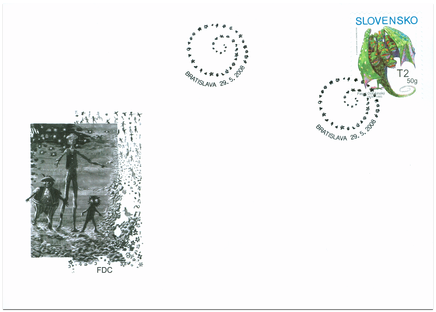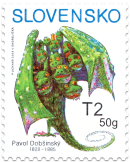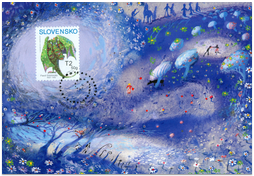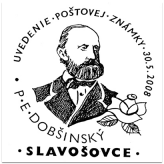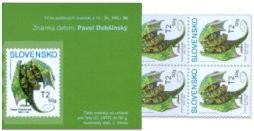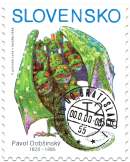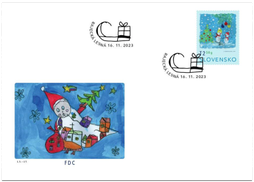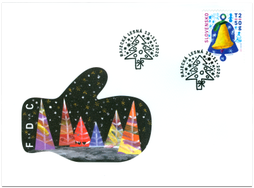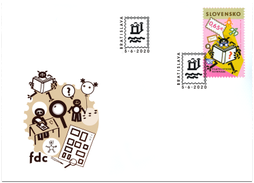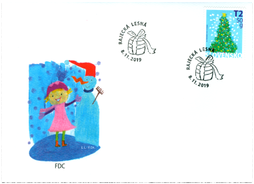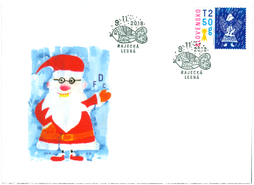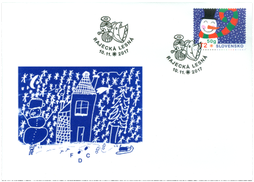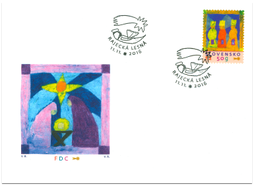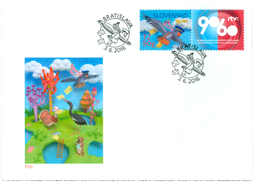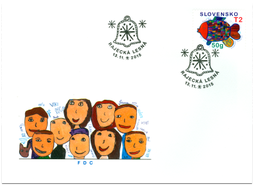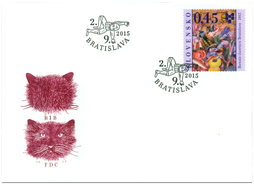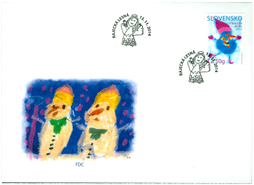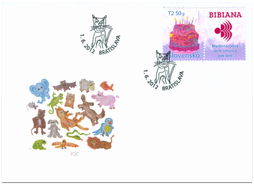FDC 423 Date of issue
29.05.2008 Sell price
1.20 €
T2 50 g responds to the rate of postage of the 2nd class up to 50 g - domestic servis. © Slovak Post, 2008 Fairy tales have probably been around for as long as people have communicated by speech. Maybe the tales are transformed myths; maybe they used to be told about God’s creatures which later changed into earthly kings, princes and princesses, and also witches, wizards, multi-headed dragons, giants and heroes acquiring magic items. Maybe they have always been here, alongside stories for higher ranks – the social elite; fairy tales as stories for ‘ordinary’ people, to both entertain and instruct, and to transfer norms within a certain social rank. Originally, such tales had no author and the contents changed with each storyteller. Storytellers skilfully adjusted the tales to the period and audience. In this way fairy tales have survived centuries, passed from parents to children and “children’s children” until being recorded in written form. There are several such collections of “Slovak fairy tales” in Slovakia. Pavol Dobšinský was one of the most famous collectors/storytellers. A multi-headed dragon often appears in his fairy-tale collections, the number of heads in multiples of three – the dragons thus have three, six, nine, or exceptionally even twelve heads. The motif of the dragon is very old – it probably originates from Slavic mythology where it most probably represented Svarog, the god of heavenly fire and flame symbolizing good. Subsequently this symbol probably underwent some transformation and became the symbol of “evil” which must be conquered. The fairy-tale hero conquering the dragon thus embodies the basic principle of a fairy-tale, where good conquers evil. Usually it is an ordinary man who wins thanks to his wisdom, cleverness, and good heart. With his good deeds, the man wins the favour of magic helpers such as a dwarf, a fairy, a fairy godmother, an old woman, and others (but also “the tall”, “the wide”, and “the sharp-eyed”); helpers are often from the animal kingdom (an eagle, a duck, a fish, an ant, etc.) or embody the heavenly bodies and natural elements (the sun, the moon, the wind, etc.). The principle of the fairy-tail is still valid and with a bit of effort can be found in all successful present-day fairy tales that please children and adults alike. Tatiana Podolínska
Show less© 2024 POFIS - Postal philatelic service. All rights reserved

